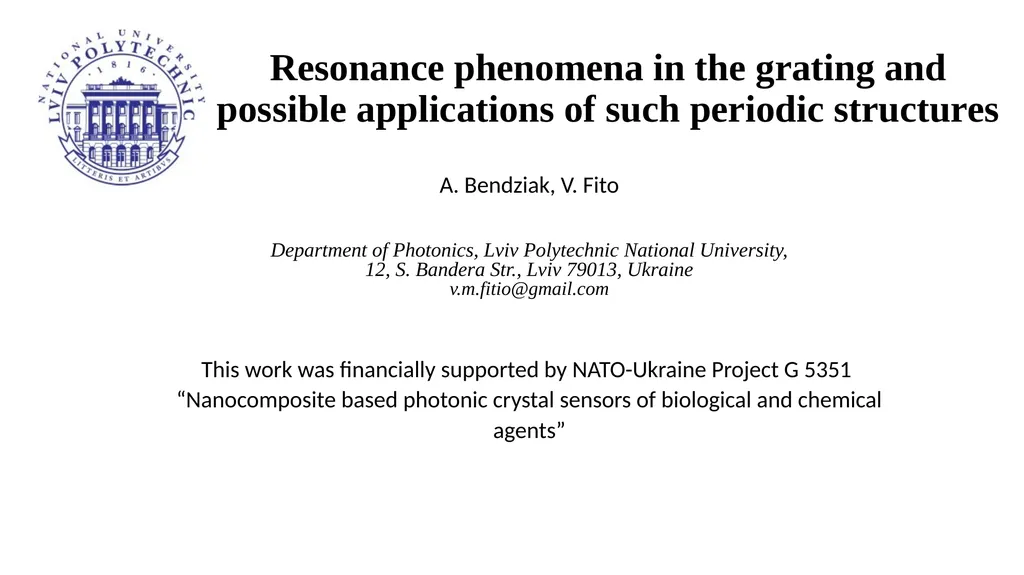
Resonance phenomena in the grating and possible
Author: jane-oiler | Published: 2025-08-06
Description: Resonance phenomena in the grating and possible applications of such periodic structures A. Bendziak, V. Fito Department of Photonics, Lviv Polytechnic National University, 12, S. Bandera Str., Lviv 79013, Ukraine v.m.fitiogmail.com This
Download Presentation
Download the PPT/PDF: Download
Transcript:
Loading transcript…